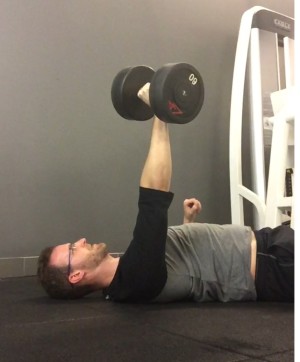This is part 2 of Fitness and Sustainability. Check out Part 1.
Our economy is based on growth. The idea is that prosperity rises as the economy expands, producing more jobs, creating more products, and supporting a base of consumers with the resources to partake in the system. Historically, the idea of natural limits to economic growth has been considered a non-issue. We have either believed that the planet and its resources are so vast that they are for all practical purposes limitless or we have simply chosen to strike the possibility entirely in order to make our economic theories function on paper. Now in the face of global warming, resource depletion, and rising economic strain, the issue is regaining attention. Currently we spend a lot of time arguing about details while ignoring some of the basic and simple truths that lie right at the surface. Let’s take a look at how this plays out in fitness and see if it can expand our perspective.
To start drawing some parallels let’s look at muscle-growth. Large muscles, especially in men, but more recently in women as well, have increased in desirability over the last several decades. Both muscle mass and definition in film, magazine, sport, and other areas of pop culture have measurably increased. When we look thoughtfully, we can see that this development does not exist in a vacuum, but rather it reflects the influence of our economic system.
Consider the concept of input. In economics, input is what goes into a system to produce an output. The definition can become a bit tricky but for the purpose of this article let us say simply that input is whatever resources have to go in to producing something. This can be both tangible inputs like raw materials, machinery, buildings, etc. to less tangible inputs such as labor. The inputs for muscle growth are the necessary nutrition (raw materials), gyms and equipment (machinery, buildings), and the effort of grinding out workouts (labor). As with any industry, the more output desired, the more input required.
This is a critical point to consider and yet it rarely is given its due thought. Hugh Jackman deserves to be commended for his candid interviews in what it takes to achieve the remarkable transformation to Wolverine of the X-Men franchise, for which he has become so well known. He explains first and foremost that it is a lot of eating. In order to support the muscle gain you need to be eating solid meals every 2 hours which, as he says, is a lot of chicken breasts. It is also necessary to train 2-3 hours daily in order to get in the required workouts. Finally, for peak body image in bare chested scenes, 36 hour dehydration phases are required. That’s what he has mentioned. Body-builders or physique competitors could also talk for hours about carb-cycling, supplementation, and more.
As you can see, achieving the kind of muscularity that someone like Jackman displays requires a lot of input. Working out two hours a day and eating every two to three hours is a huge investment of resources. No one stops to question the limits of this input while the bar on muscularity and body image continues to be raised. This is a pattern in our society. Over and over again we are confronted with the idea that more is better. Bigger business, bigger products, bigger food, bigger cars, bigger muscles. The U.S. economy as a whole has been growing at an average rate of 3% a year since 1947 and some say that the current rate of 3.7% is far too low and that we should be achieving much more. Questions such as whether or not the level of input is reasonable and where it should come from are ignored.
As muscle growth illustrates, fitness is an area in which we have the opportunity to experience these questions on a personal level. It can be sobering to be confronted with the fact that gaining real muscle mass requires two to three hours of workout time a day supplemented by four to six thousand calories over six meals and bookended by eight solid hours of sleep. For many, that level of input is simply not realistic. The same might be true for our economy as a whole. Will we forever continue the pursuit of more, regardless and even ignorant of the costs, or will we be more mindful of what it is we want versus what it takes to achieve?
What I have come to understand through personal training is that most of what needs to happen to improve quality of life are simple, but impactful lifestyle changes. It is not always about how much you can put in – how hard you can push in the gym or what products you buy or what fitness classes you attend. It is about recognizing what is necessary, and what is excessive. What is truly beautiful about this process is that while at first it may seem daunting, when the results come, they often outshine the rewards of old habits. This is the heart of real change. These are some of the lessons that we need to learn in order to do a better job with our personal lives, our communities, and our environment. Our personal fitness endeavors can teach us, but we must learn how to look and to recognize where our micro-level behaviors are being driven by our macro-level society.
In Fitness and Sustainability Part 3 I’d like to continue with this idea and talk more about the hidden costs behind the inputs for both the economy at large and for our individual bodies and how we can learn to recognize and react to them.
Web:
http://www.researchgate.net/publication/12194298_Cultural_expectations_of_muscularity_in_men_the_evolution_of_playgirl_centerfolds
http://www.thinkmuscle.com/articles/thompson/body-image-and-bodybuilding.htm
http://www.foe.co.uk/sites/default/files/downloads/overconsumption.pdf
http://www.multpl.com/us-gdp-growth-rate/table/by-year
Literature:
Sandmo, Agnar. Economics Evolving
Daly, Herman E. & Cobb, John B. Jr. For the Common Good
Jackson, Tim. Prosperity Without Growth




Pingback: Is Nutrition Fueling Us Or The System? | Do The Movement June 20, 2014
[…] ← Previous […]
Pingback: Fitness, the Economy, and the Environment - Part 1 - do the movementdo the movement November 30, 2014
[…] ← Previous Next → […]
Pingback: What Real-Life Jurassic Park Shows About Fitness - do the movement June 1, 2015
[…] I saw an article this week that illustrates an important general concept that we need to pay more attention to: inputs are not always the answer. What I mean by that is that often our biggest challenges are not fixed by adding something, but rather by taking something away. This goes for fitness and for health as a wholistic concept. (read a previous post on inputs) […]
Pingback: Fitness and Sustainability, Part 1 - Nutrition Lessons - do the movement March 5, 2016
[…] Next: Part 2 – Growing Muscles, Growing Economies […]
Pingback: Fitness and Sustainability, Part 3 - Fueling Us Or The System? - do the movement March 5, 2016
[…] the last part of this series we looked at how growth affects the way we think about training and what we hope to […]
Pingback: Fitness and Sustainability, Part 4 - Expanding The Benefits Of Fitness - do the movement March 12, 2016
[…] the last few segments (Part 1, Part 2, Part 3) we have seen how growth drives our way of life in the developed world. In the last segment […]